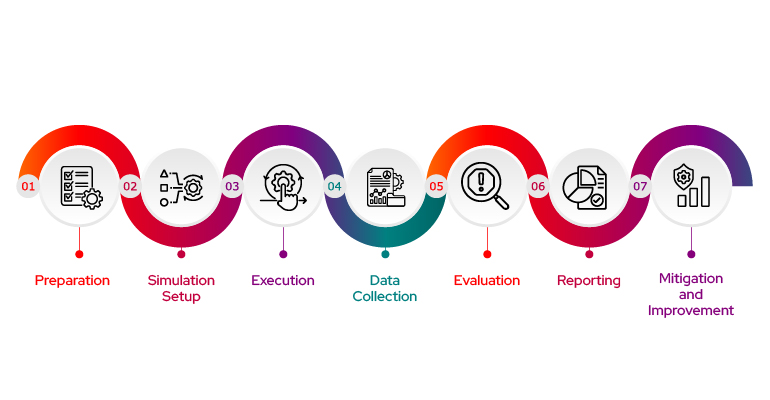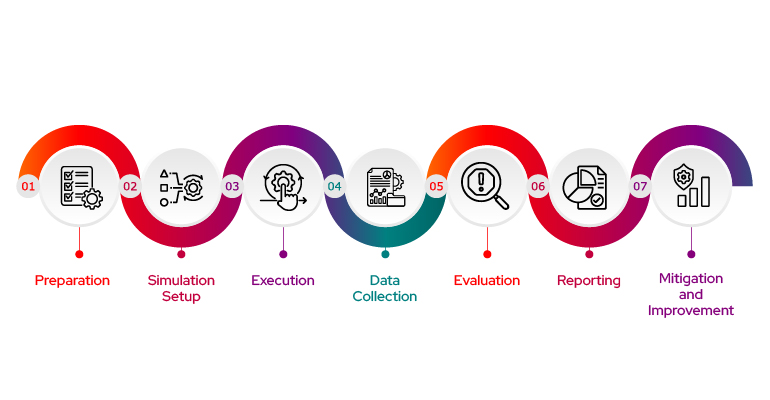
2024-7-26 14:56:9 Author: securityboulevard.com(查看原文) 阅读量:8 收藏
Distributed Denial of Service (DDoS) attacks have become increasingly sophisticated, posing significant threats to businesses worldwide. Protecting assets and ensuring continuous availability of services is crucial for any organization. This blog walks into the wide road of why DDoS stress testing is essential for effective DDoS protection.
DDoS attacks involve overwhelming a target server, service, or network with a flood of internet traffic, making it unavailable to legitimate users. They can be launched from multiple compromised systems or botnets, often disrupting operations and causing substantial financial and reputational damage.
- Volumetric Attacks: These aim to saturate the bandwidth of the target site by sending massive amounts of traffic. Examples include UDP floods and ICMP floods.
- Protocol Attacks: These consume server resources or intermediate communication equipment, exhausting the target’s ability to process genuine requests. Examples include SYN floods and fragmented packet attacks.
- Application Layer Attacks: These target the application layer of the OSI model to crash web servers. Examples include HTTP floods and Slowloris attacks.
- Service Disruption: The primary goal is to make a service unavailable to its intended users, causing downtime and preventing legitimate access.
- Financial Losses: Downtime can lead to lost sales, decreased productivity, and potential breach of service level agreements (SLAs), incurring financial penalties.
- Reputation Damage: Persistent or high-profile attacks can harm an organization’s reputation, leading to loss of customer trust.
Why is DDoS protection important?

DDoS protection is crucial because it ensures the availability and reliability of websites and online services by preventing malicious attacks that can overwhelm servers with excessive traffic. These attacks can lead to significant financial losses due to downtime, disrupted services, and potential breaches of service level agreements (SLAs). Moreover, frequent or prolonged outages can damage a company’s reputation and erode customer trust. By implementing robust DDoS protection, businesses can maintain seamless operations, safeguard their revenue streams, and uphold their reputation in the eyes of their customers.
What is DDoS stress testing?
DDoS stress testing is a process of simulating DDoS attacks on your infrastructure to evaluate its resilience and capacity. By generating controlled, high-volume traffic, it helps identify vulnerabilities, assess the effectiveness of your defenses, and refine your incident response procedures. This proactive approach ensures that your systems can withstand actual attacks, minimizing downtime and maintaining service availability.
What is the need for DDoS stress testing?
DDoS stress testing is vital for preparing and protecting your infrastructure against potential attacks. Here are the key reasons why it is necessary:
- Address Infrastructure and Misconfiguration Issues: Identify and fix weaknesses before an actual attack occurs.
- Enhance Incident Response Procedures: Improve your team’s ability to respond effectively to DDoS attacks.
- Optimize DDoS Mitigation Solutions: Understand how to best utilize your mitigation tools for maximum effectiveness.
- Harden Assets: Strengthen your systems to be more resilient against DDoS attacks.
- Evaluate Mitigation Vendors: Assess the capabilities and limitations of your DDoS mitigation providers.
- Prevent Panic During Attacks: Ensure your team is prepared and confident when real attacks happen, minimizing disruption and panic.
- Minimize Downtime: By identifying potential points of failure, organizations can take proactive measures to reduce the risk of service outages during actual attacks.
- Compliance Requirements: Some regulations and standards require regular stress testing as part of a comprehensive security strategy.
- Optimize Performance: Stress testing helps in optimizing system performance under high load conditions, ensuring that it can handle peak traffic without degrading performance.
DDoS stress testing involves simulating DDoS attacks on your infrastructure to assess its resilience and identify weaknesses. Here’s how it works:

- Define Objectives: Determine the specific goals of the stress test, such as evaluating server capacity or response times.
- Identify Targets: Select the systems, applications, or network segments to be tested.
- Configure Test Parameters: Set up the type of DDoS attacks to be simulated, such as volumetric, protocol, or application-layer attacks.
- Select Tools: Use specialized tools and platforms designed for generating DDoS traffic.
- Launch Attacks: Generate controlled DDoS traffic to simulate real attack conditions.
- Monitor Responses: Observe how the targeted infrastructure responds to the simulated attacks, including traffic handling and mitigation effectiveness.
- Gather Metrics: Collect data on performance, such as response times, downtime, and the effectiveness of mitigation measures.
- Analyze Logs: Review logs to identify any anomalies or failures during the test.
- Assess Vulnerabilities: Identify weaknesses or misconfigurations that were exposed during the test.
- Evaluate Incident Response: Analyze how well your incident response procedures worked under stress conditions.
- Generate Reports: Compile findings into a detailed report, highlighting areas for improvement.
- Recommendations: Provide actionable recommendations to enhance DDoS protection and resilience.
7. Mitigation and Improvement:
- Implement Fixes: Address identified vulnerabilities and optimize your DDoS mitigation solutions.
- Retest: Conduct follow-up tests to ensure improvements are effective and systems are more resilient.
At StrongBox IT, we understand the critical importance of maintaining system resilience in the face of potential Distributed Denial of Service (DDoS) attacks. Our DDoS stress testing services are designed to rigorously evaluate your system’s ability to withstand high volumes of traffic, uncover vulnerabilities, and assess the effectiveness of your existing mitigation strategies. By simulating real-world attack scenarios, we help you identify weaknesses, improve response plans, and optimize system performance. With StrongBox IT’s comprehensive DDoS stress testing, you can enhance your security posture, ensure business continuity, and gain confidence in your ability to handle and mitigate the impacts of DDoS attacks. Secure your infrastructure and maintain operational excellence with StrongBox IT’s expert DDoS stress testing solutions.
如有侵权请联系:admin#unsafe.sh